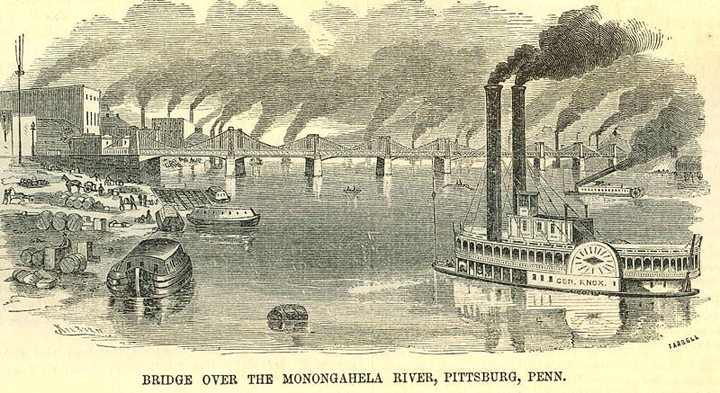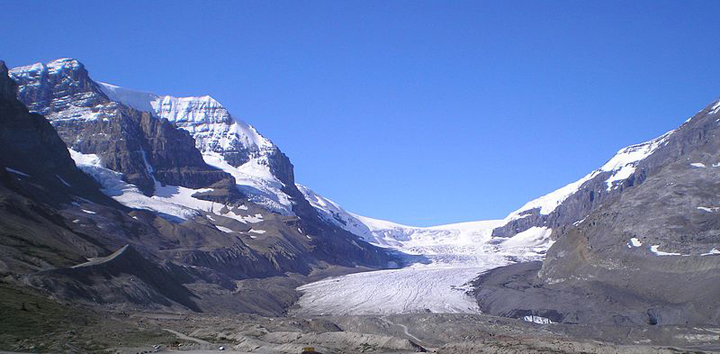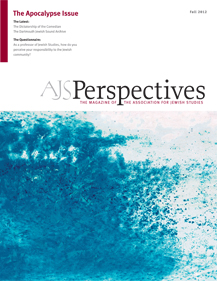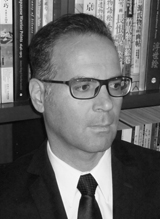
If 2011 and 2012 are barometers of the current social temper, what do they indicate? It would be easy to regard them as the latest in a series of identical milestones on the long, straight road of apocalyptic doomsdays forecast since biblical times. But this perspective misses several points.
For one thing, the incidence of apocalyptic speculation historically displays more of a peak-and-valley profile than a steady state. The 2011 and 2012 events are part of a broad upswing that began four or five decades ago, in which people across the globe and in every culture have been progressively more inclined to understand the world and their place in it through the lens of the apocalyptic worldview.
The years 2011 and 2012 are also strikingly different in their content and social contexts. In fact, their differences reveal much about the future of apocalyptic speculation, which displays no sign of abating and seems to be heading down two separate paths.
The first path is suggested by the 2011 prediction. Harold Camping’s worldview is full-blown apocalyptic, in its classic biblical mode. For Camping, God is the transcendent reality that defines time, space, and human existence. This reality is disclosed in the divine plan for history, whose imminent climax is expected to resolve the fierce and long-standing conflict between good and evil, and bring salvation and justice to the few.
It is also significant that 2011 is a socially “closed” prediction, again mirroring traditional doomsday prophecies. The designation of 2011 was the product of a single source, Harold Camping. It was transmitted along a restricted channel, namely Camping’s radio broadcasts and other media, including the audio and text messages on his website. It was received by a group that held Camping’s interpretation to be divinely inspired. From transmission to reception, the 2011 prediction was virtually immune to external modification or augmentation.
The year 2011 has its unique features; every doomsday prediction does. Camping’s timetable works from the date of Noah’s Flood, rather than the figures and images in the book of Daniel or Revelation of John that usually underwrite Christian apocalyptic speculation. Also, he uncovers the divine plan by crunching the biblical numbers, instead of it being revealed to him in a vision, inscribed on golden tablets, or disclosed by a space alien, which is what happened to Dorothy Martin (a.k.a. Marion Keech) in 1954, as recounted in the classic study by Leon Festinger et al., When Prophecy Fails.
But to concentrate on such details is to miss the big picture. In its ideology and sociology, 2011 is identical to the predictions in ancient apocalypses like Daniel and Revelation, and in the thousands of other Jewish, Christian, and Muslim apocalyptic prophecies composed thereafter—up to and including our own time.
This is a staggering thought. We live in the twenty-first century. We are heirs to the Enlightenment and the scientific, political, and social revolutions that it foaled, fostered, or furthered. We cannot board a plane, build a bridge, argue the law, conduct foreign policy, vaccinate against smallpox, or split the atom independent of the principles of scientific rationality and the presumption of the primacy of human intellection.

Yet still the ancient apocalyptic mindset persists. And not just persists, but thrives. For 2011 is the tip of the proverbial iceberg. Its old-school, day-of-wrath predictions are carbon-copied in a contemporary outburst of apocalyptic prophecies of every religious stripe and cultural shape (doubters: search the web). More broadly, the rise of fundamentalism worldwide is integrally informed by the propositions and claims of the apocalyptic worldview. Several factors encourage this symbiosis, the most important of which might be the radical cosmic dualism that is axiomatic to both apocalypticism and fundamentalism, and toxic to modern liberal values. The year 2011 is not a sign, it is a symptom.
The other path along which apocalyptic speculation seems to be heading is suggested by the 2012 phenomenon. It began life about five decades ago in the first scholarly translations of the “long-count” calendar of the Mesoamericans, which forecast the end of a Great Period of 13 b’ak’tuns that some authorities translated to a date in late 2012. In the 1980s and 1990s, this date was taken up by a series of cranks, and worked into a scenario that imagined that the pre-Columbian Mayans had predicted a biblical style end of the world for December 21, 2012.
Although this date remains its core feature, the 2012 phenomenon has grown well beyond its Mayan roots. Many 2012 predictions are secular-apocalyptic in orientation or not apocalyptic at all. Some expect a seismic political change that is correlated to the upcoming American presidential election and backlit by the present economic crisis. Others anticipate the dawning of a new spiritual age or stage in human consciousness. Still others envision the sudden intrusion of a new celestial body in our solar system. The list goes on.
It is critical to recognize the novelty of 2012. The ability of apocalyptic predictions to derive from data outside Scripture (however defined) is not a modern development. Ancient Jews and Christians composed dozens of apocalyptic texts and attributed them to the classical Sibyls. Nor is it historically exceptional for predictions to be later supplemented or augmented. Byzantine-era Christians regularly assembled new apocalyptic oracles from parts of older ones in order to accommodate changing circumstances.
What is unprecedented is the planetary scale and wide-open nature of these processes. The architecture of Internet technologies—hypertext referencing, user-generated content, social interfacing—coupled with the demands of an online audience, typically with an omnivorous intellectual appetite, have profoundly altered how apocalyptic prophecies are created, transmitted, and received. The year 2012 marks the first public apocalypse. Apocalyptic conjecture can be instantaneously uploaded to freely accessible websites, blogs, and social media, enabling real-time public discussion in a global forum unrestricted by the usual theological firewalls. Some ideas stick, others do not. Syncretism is inevitable.
One result of these processes has been the emergence of a “superflat” appreciation of apocalypticism, the logical if technologically unforeseen culmination of a trend first observed in the 1970s by Harvard theologian Amos Wilder among others. Superflat apocalypticism is marked by a virtually infinite data plane. Individuals are able to access any apocalyptic prediction, past or present, via the Internet. At the same time, the vertical dimension is almost nonexistent, intellectual depth and critical nuance having been sacrificed to unlimited content. Apocalyptic images, symbols, and vocabulary have consequently become unanchored from the traditions from which they once derived, even as they transcend them. The year 2012 is the Internet Apocalypse. So long as we are wired in, there is no going back.
It will be interesting to discover whether the two paths indicated by the 2011 and 2012 events presage the future of apocalyptic speculation as I contend. Prediction is always a risky affair, as eschatological prophets from John the Divine to Joachim of Fiore to Sabbatai Zevi to William Miller to Harold Camping can attest. Every end-time prediction has been wrong. The failure rate is 100 percent. In fact, every new prediction unintentionally depends on the bankruptcy of its predecessors for its own authority. “Apocalypse,” as Frank Kermode observed, “can be disconfirmed without being discredited.”
Even as the 2011 and 2012 events highlight this generation’s fascination with the end of the world, they also mask the one doomsday prediction that is indisputably accurate. The tragedy of our time is the degree to which people who should know better seek revelation about an imaginary day of doom in ancient writings or archaic calendars, yet overlook the real apocalypse outside their kitchen windows, in the form of the catastrophic degradation of the biosphere. No heavenly vision is required to divulge this future; no ancient tome needs to be deciphered or hidden cosmic design revealed. The ecological destruction is plain to all, and its planetary magnitude and the extent of our personal culpability are equally transparent to anyone with access to the Internet.
With culpability comes responsibility. Eschatological prediction presupposes that an otherworldly agency or force governs history, and that the coming doom cannot be forestalled. It transfers responsibility for the future to something or someone else. This is a perilous stance in light of the current crisis. To consider the looming ecological doomsday in this way, as beyond the reach of human intellection and imagination, is to abrogate our responsibility to the planet. Tomorrow is ours alone to create, as it ever has been.


 Lorenzo DiTommaso is associate professor and chair of the Department of Religion at Concordia University, Montréal. His next book, The Architecture of Apocalypticism, the first volume of a trilogy, is forthcoming from Oxford University Press.
Lorenzo DiTommaso is associate professor and chair of the Department of Religion at Concordia University, Montréal. His next book, The Architecture of Apocalypticism, the first volume of a trilogy, is forthcoming from Oxford University Press.